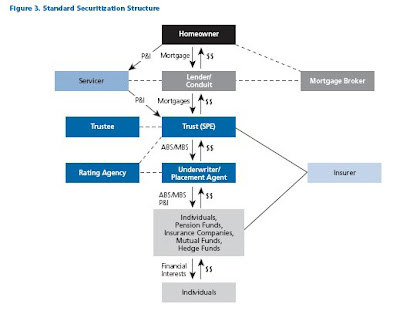Surprisingly,
the Sun-Sentinel published a story on how foreclosures affect property values:
“Mounting mortgage defaults across South Florida threaten to hurt more than just those homeowners who lose their properties to lenders.”
“Experts say foreclosures could drag down already sluggish housing prices throughout entire neighborhoods.”
“In a national study published last year, two housing analysts found that for every foreclosure within one-eighth of a mile of a single-family home, property values decline by about 1 percent, and even more in dense developments.”
“The numbers of homeowners defaulting on their mortgages and facing foreclosure are rising steadily across South Florida this year, according to Realestat.com, a Plantation-based company that compiles local housing statistics.”
“The number of Palm Beach County homeowners behind on their mortgage payments topped 1,000 in June, almost a fourfold increase from 259 a year ago. Actual foreclosures were flat last month.”
The
South Florida Business Journal reports:
“The housing market in Florida and across the Southeast continues to bottom out and will likely stay weak through 2007, a report issued by RBC Centura economist Amy Goldbloom showed.”
“The Raleigh, N.C.-based bank said it expects housing markets across the Southeast to gradually recover, though Florida and Virginia may lag behind other areas because those markets were hit the hardest by the housing correction.”
“’The South Florida housing market has been hit pretty hard, when it comes to Florida,’ said Rick Perez, regional president of personal and business banking in Florida.”
“He blamed speculation for exacerbating the rise in prices, and said that homes in Orlando and South Florida were the first to zoom up in price, and may be the first to come down.”
Yet with all this news, the
Palm Beach Post published a story that once again quotes the Realtor's® mantra, “Now is a great time to buy:”
“Amid proliferating news stories about an underperforming real estate market and a glut of foreclosures, this might seem like a scary time to buy a home.”
“Nevertheless, challenging conditions are also making this a prime time to buy a home in Florida.”
“Several factors are contributing to the state's ‘buyer's market.’”
“Homes are taking longer to sell, with house sales falling 34 percent and condo sales declining 28 percent this May over the same period in 2006, according to the Florida Association of Realtors®. Median home prices are dipping as well, as sellers strive to make a deal.”
Unfortunately, our real estate market has become the laughing stock of the nation. One
New Hampshire columnist mentions the Miami market in his column today:
“It was a rough week for investors as markets worldwide took a tumble. The only silver lining, at least for me, was watching CNBC’s bobble head boobs attempt to rationalize the financial fiasco. The gist of their kooky conclusion was that the markets had overreacted. The global economy is in fine shape, they chimed almost in unison.”
“As usual, Larry Kudlow, the grand sultan of shills, shrugged the loss off – proclaiming the “Goldilocks” economy remains intact. In his myopic mind Thursday was merely a minor 2 percent correction.”
“Hey, Larry, as I recall Goldilocks’ was trespassing and in the end it didn’t turn out too good for her. In any case, if you believe Kudlow and his cadre of cretins I have some captivating condos priced to move in Miami. Swampland was once the punch line of that joke, but nowadays swamps have higher valuations than Miami real estate.”
The
Miami Herald gives a possible solution to our affordable housing problems:
“For $380 a month, it seems the most anyone looking for housing in Miami could hope to get is, perhaps, a broom closet or a toolshed.”
“But in Little River, Shawnee Chasser, who runs a landscaping company out of a tiny inner city farm, offers what, for some, is a green dream come true: a small and cozy space, including electricity, cable TV and broadband Internet access, in a pithecellobium. In other words, a large tree common in Florida.”
“’I've been renting space out here for a few years now to make some extra income and share the space,’ said Chasser, who lives and works at the Earth N' Us farm, a wooded 1.5-acre wonderland in the middle of a gritty, concrete-heavy neighborhood near the edge of Little Haiti.”
“’$380 A room in a treehouse . . . Yes, a real treehouse. This is a small yet cozy room in a real Treehouse in the middle of paradise which lies in the middle of Miami. It is about 10 minutes from downtown and 10minutes from the beach.’”

 Stumble It!
Stumble It!